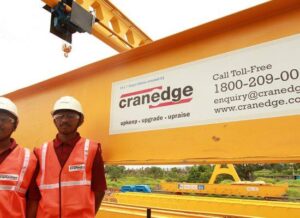Smart Cities Need Smart Buildings.

At the ‘5th UCLG World Summit of Local and Regional Leaders’ which was held in Bogota, Colombia, Dr. Joan Clos, Executive Director of UN-Habitat, put forward a thought provoking point, “urbanization is no longer the construction of the city, as it is already built.Urbanization is about learning how to live together.” This idea of being connected, smart integrations with the assistance of Information and Communications technology (ICT) and the Internet of Things (IoT), to manage a city is the key idea behind the concept of ‘smart cities’.
Smart cities, as defined by Frost & Sullivan, have eight smart parameters: sub-segments of smart energy, smart mobility, smart buildings, smart infrastructure, smart technology, smart healthcare, smart governance, and smart citizens. My focus today is on one of those components- Smart Buildings.
So, how smart could the buildings be?
According to IBM, “buildings consume 42% of all electricity—more than any other asset. By 2025, buildings are projected to be the largest emitters of greenhouse gases on our planet.” It’s a sector that needs prime focus to curb global warming. When talking about environmental impact we must also talk about the depleting level of pure water, as buildings tend to lose a large amount of water that is supplied though much of this is also attributed to those citizens in the building. That said, it is clear that smart buildings are an important step towards resource conservation and optimal usage.
While there may be subtle (or not so subtle) differences, for purposes of this post let me stick to the paradigm that Smart buildings, ‘automated buildings’, ‘intelligent buildings’ et al are buildings that incorporate smart technology. As per the Designing Buildings wiki, to fit the bill smart buildings should have various systems including Automated systems, Intelligent building management systems, Energy efficiency measures, Wireless technologies, Digital infrastructure, Adaptive energy systems, Networked appliances, Data gathering devices, Information and communications networks, Assistive technologies, and Remote monitoring. In simpler terms the Security and surveillance systems, Heating, Ventilation and Cooling (HVAC) systems, Water management systems, Parking management systems etc. to name a few.
According to the United Nations Environment Programme, “cities occupy only 2% of the Earth’s terrestrial surface, but consume more than 75% of the natural resources”. This impact on the environment makes waste management a high priority for smart cities, and that has to begin with smart buildings. This essentially starts with smart trash bins that monitor waste segregation, the level of garbage content, and manage waste collection schedules when tied together with IoT. This makes waste collection much easier. Intelligence can be applied to create smarter waste pickup schedules. These schedules can be organized to minimize fuel wastage, and also to make the work at processing plants easier too. Better segregation and intelligent data transfer make waste processing easier. Waste can then be delivered directly to specific processing plants for incineration, recycling etc. Not just that, waste collection data can also be studied for insights that can then contribute to the creation of methods to reduce waste production in general too.
Another aspect that smart buildings focus on is decreased energy consumption. Generally, energy is wasted by keeping on lights beyond what is needed or keeping air-conditioning switched on even when there is no need for the level of cooling, or even for any cooling at all. Automated lighting control systems, thermostats, and sensors play a great role in decreasing energy use by adjusting the settings based on real time monitoring. And not just that all those systems can be controlled remotely too.
With advancement in various renewable energy technologies, smart buildings can also be designed to produce as much energy (or more), as they consume. There are a bunch of examples out there already. Take, for instance, the DPR Construction’s Office in San Francisco, CA, with a Net Zero Energy Building (NZEB) certificate, it is heavily decorated with photovoltaics (PV) panels, rooftop solar thermal water heating system, intelligent, electrochromic windows, and ultra-energy efficient ceiling fans to list a few. Another such example is the San Francisco Public Utilities Commission building, that has a hybrid solar array and a wind turbine that can generate up to 227,000 kilowatt-hours per year. The building also recycles and reuses wastewater and has a raised flooring system to reduce heating, cooling and ventilation costs.
Smart cities are being touted as the next big step towards urban and national development in general. To truly become the key to solving urban problems, they must address issues like asset utilization, energy conservation, quality of life for citizens, healthcare, ease of transportation, and emergency response. It’s clear that these issues cannot be addressed at the aggregated level by looking at them only in the context of the city. Issues like these need to addressed from the ground up – from the individual building units that comprise the city. That, in a nutshell, is why Smart Cities need Smart Buildings.
Thank you for stopping by. I want to use this space to share my thoughts on how technology can help to make Facilities Management more effective, with the occasional foray into adjacent areas like Mobility and Software. I would welcome your comments or feedback. You can also follow me on Twitter at @mohankgv.







